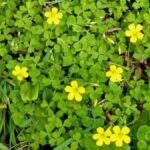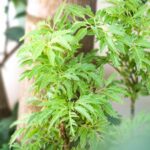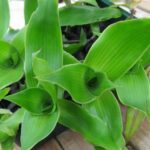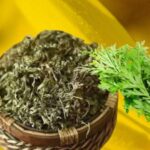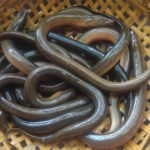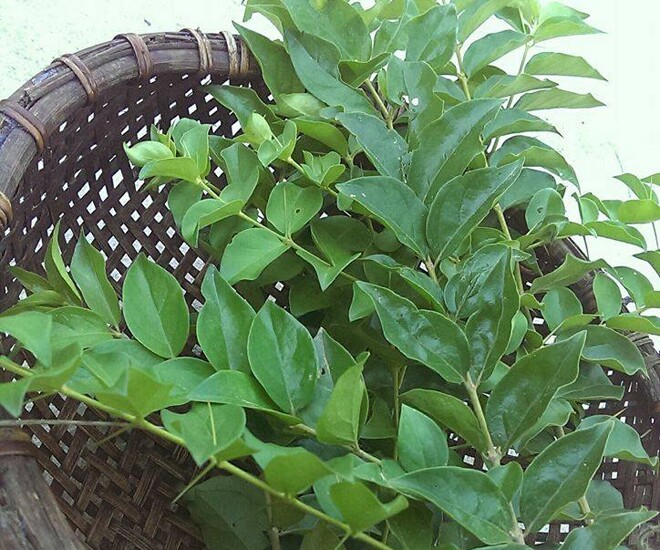
The star ingredient in this unique jelly dish is the leaves of the Găng tree, a shrub that commonly grows wild in the northern midlands of Vietnam or is cultivated as a fence by locals. The tree has a woody trunk, thorny branches, and round leaves with slightly pointed tips. In the past, Găng leaves used to litter the ground, going mostly unnoticed. However, they have now become a significant source of summer income for many households.
Ms. Mai, an experienced Găng jelly maker, shares that the key to a delicious batch of jelly is to select young or medium-aged leaves. After plucking, the leaves are thoroughly washed and soaked in boiled and cooled water. Next, they are vigorously crumpled to extract the green essence, which lends the jelly its distinctive soft and chewy texture. The leaf juice, once filtered through a cloth, needs to be left undisturbed for about an hour to naturally set into a translucent green jelly with a smooth and silky mouthfeel.
“You have to work quickly when crumpling the leaves, or the jelly will set before you’ve had a chance to filter it,” advises Ms. Mai. “The ideal jelly should be crystal clear, with a pale green hue, a soft and smooth texture, and a subtle yet distinctive aroma.”
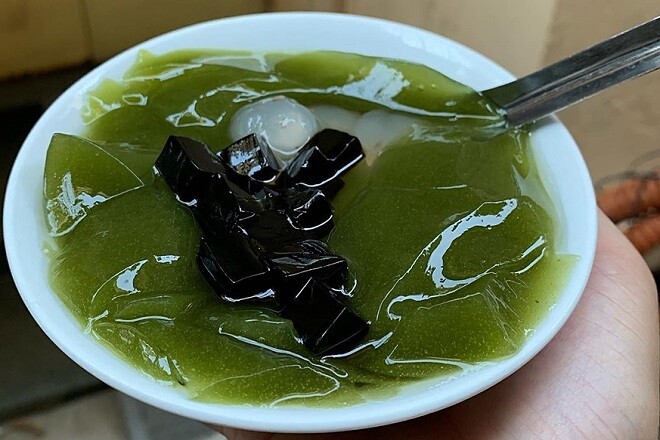
In addition to fresh leaves, dried Găng leaves and Găng powder are also widely available in the market. Before using dried leaves to make jelly, they need to be soaked in water to soften and then undergo the usual steps of crumpling and filtering. This convenience allows consumers to enjoy Găng jelly year-round, free from the constraints of seasonal availability. Dried Găng leaves are priced at approximately 100,000 VND per kilogram, while Găng powder costs a premium at 300,000 VND per kilogram.
To prepare Găng jelly from the dry powder, simply take the desired amount of powder in a filter bag and rinse it briefly with boiled and cooled water. Then, place the bag in limewater and gently squeeze to release the resin. Finally, filter the Găng water again and chill it in the refrigerator. When serving, pour the jelly into a bowl and top it off with a mixture of sugar syrup and coconut milk for a refreshing treat.
The Găng tree is unpretentious about its growing conditions and thrives in the northern climate. After about one to two years of planting, the tree starts bearing leaves suitable for jelly-making, and this harvest can be sustained for several subsequent years. Many households have started propagating and cultivating Găng trees to sell the leaves as a cash crop, particularly in rural areas, where it is seen as a promising economic venture.
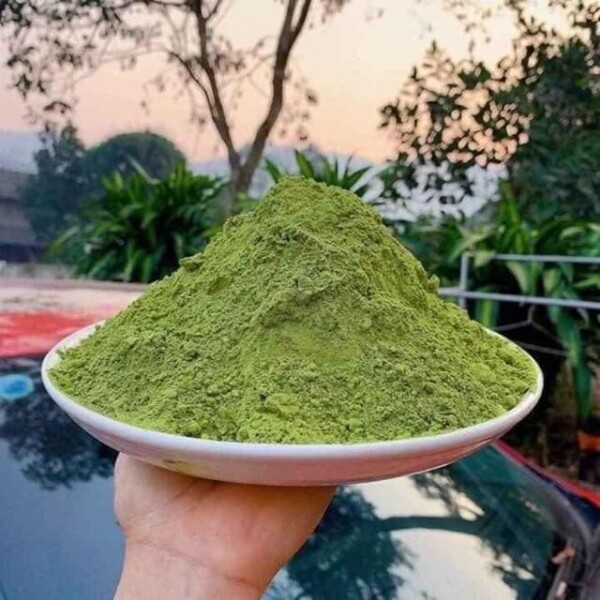
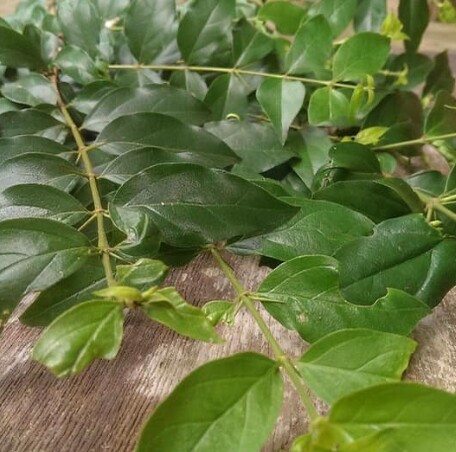
Beyond its intriguing flavor profile, Găng jelly is also reputed in folk medicine for its cooling properties, positive effects on digestion, and kidney-cleansing abilities. The mucilage derived from Găng leaves is a type of soluble fiber that soothes the digestive tract and effectively detoxifies the body during the hot season.
From a once-overlooked wild plant associated with rural memories, the Găng tree has quietly risen to prominence as a beloved summer delicacy. Thanks to its convenience and unique flavor, Găng jelly is now widely available, gracing the menus of both humble street-side stalls and upscale restaurants.
The Wonder Weed: Nature’s Cure-All, Growing Wild and Free.
The golden-flowered roselle, a natural remedy for sore throats, is a powerful plant with multiple healing properties. Rinse the leaves and chew with a pinch of salt, gradually swallowing the juice to soothe inflammation and irritation. For external use, crush the leaves, warm them, and apply as a poultice to reduce swelling and heal boils.
Why Did Our Ancestors Recommend Planting Wormwood in Front of the House? The Significance of Wormwood That Many Are Unaware of.
Absinthe, also known as wormwood, is a popular herb with a long history of culinary and medicinal use. But did you know that it also holds a special place in the world of Feng Shui? This versatile plant is believed to possess unique properties that can influence the energy and harmony of your space.



























